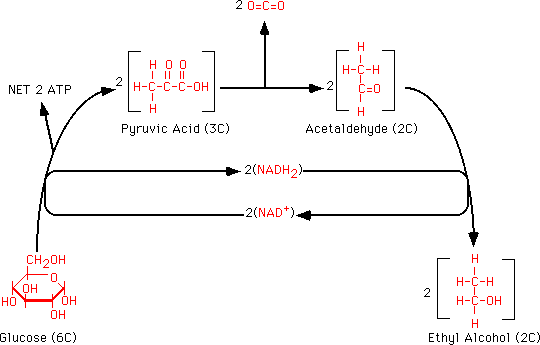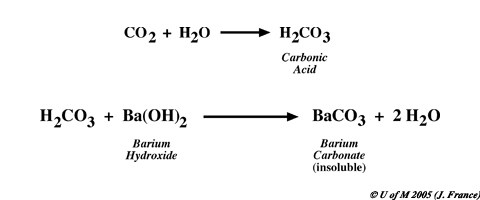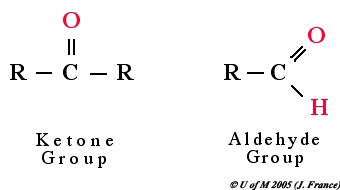

Fermentation of glucose to ethyl alcohol is carried out by several organisms, including yeasts of the genus Saccharomyces. This process is important as the basis of the brewing and distilling industries. A summary of the reactions involved in the production of ethyl alcohol from glucose is shown in the figure to the left.
Note that in the overall process ATP is generated along with CO2 and ethyl alcohol. NAD+ is reduced during glycolysis but is reoxidized in the final step to ethyl alcohol, so there is no net gain of reduced NAD+ in the overall process.
Yeast cells reproduce by a process known as budding, which is asexual. The basic division is by mitosis.
From the overall steps of
alcohol fermentation you can see that for every mole of glucose used, 2
moles of carbon dioxide are generated. One test for CO2
is to bubble the gas in question through a barium hydroxide solution. The presence
of a white precipitate indicates carbon dioxide gas since: 
When the gas from an active yeast culture is bubbled through a 0.1 M Ba(OH)2 solution a white precipitate will form indicating the gas produced is carbon dioxide.
Benedict's reagent is used as a simple test for reducing sugars. As stated in lab 2, reducing sugars have either a free aldehyde or a ketone group as part of their molecular structure.

Glucose is a reducing sugar, while the disaccharide sucrose is not.
Glucose heated in Benedict's reagent reduces Cu++ ions to form a green to brick-red precipitate depending on the amount of sugar present.
![]() Return
to Biology Home
Return
to Biology Home ![]() Back
to Lab Index
Back
to Lab Index ![]() Forward
to Next Page
Forward
to Next Page ![]() University
of Manitoba Home
University
of Manitoba Home